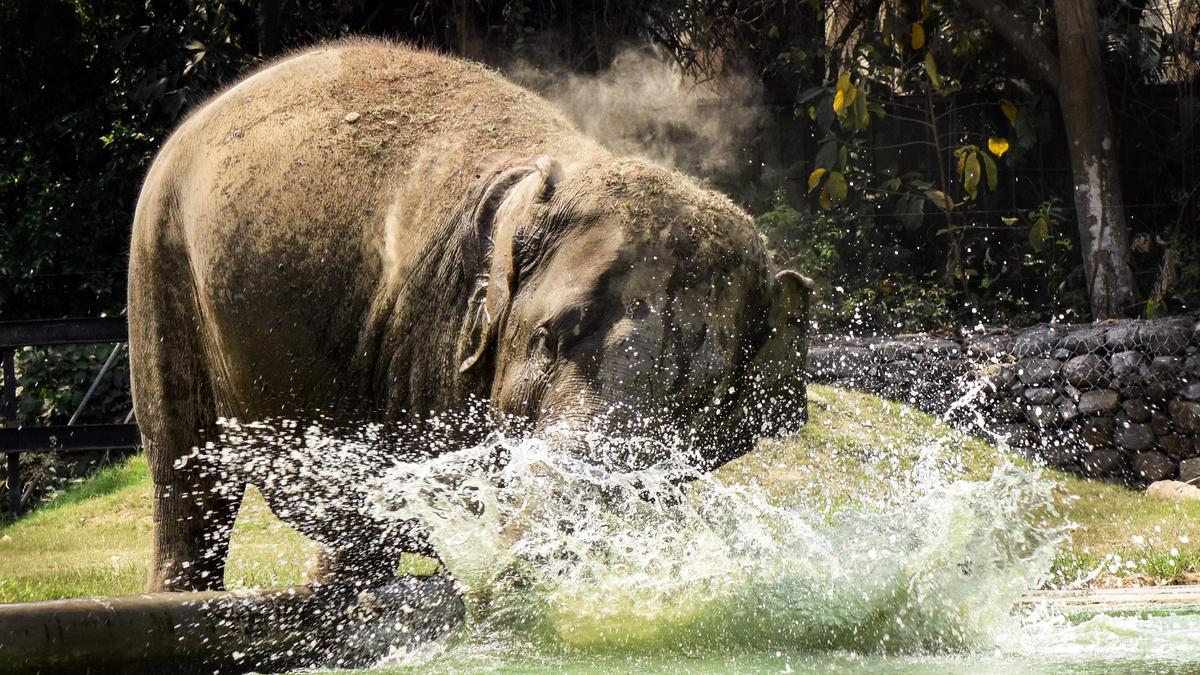
News
September 28, 2025
Elephants in fragmented habitats of South Bengal record higher levels of stress, reveals study
Elephants living in more fragmented habitats in central India, particularly South Bengal have recorded higher adrenal activity to cope with the stress.
Elephants in South Bengal are facing a tough time, and a recent study reveals the extent of the challenges they endure. Researchers have found that elephants inhabiting fragmented habitats in the region, and indeed across central India, are experiencing significantly higher levels of stress compared to their counterparts in more contiguous, undisturbed areas. This heightened stress, indicated by increased adrenal activity, is a direct consequence of the pressures these magnificent creatures face in their shrinking and increasingly isolated home ranges.
The study highlights the detrimental impact of habitat fragmentation, a process driven by deforestation, agricultural expansion, and infrastructure development. As elephant habitats are broken into smaller, disconnected patches, the animals struggle to find sufficient food, water, and mates. This forces them to navigate through human-dominated landscapes, increasing the risk of conflict with local communities and exposing them to various dangers.
The adrenal glands, responsible for producing stress hormones like cortisol, become overactive in elephants trying to cope with these pressures. Chronically elevated stress levels can have severe consequences for their health and well-being, impacting their immune system, reproductive success, and overall lifespan. The constant state of alert takes a heavy toll, leaving them vulnerable to disease and hindering their ability to thrive.
South Bengal, with its dense human population and expanding agricultural activities, represents a particularly challenging environment for elephants. The region's fragmented forests offer limited resources, forcing elephants to venture into cultivated areas in search of food, leading to crop raiding and retaliatory actions from farmers. This human-elephant conflict not only poses a threat to the elephants themselves but also disrupts the livelihoods and well-being of local communities.
The findings of this study underscore the urgent need for effective conservation strategies to protect elephant habitats and mitigate human-elephant conflict. These strategies must focus on preserving and restoring corridors that connect fragmented forest patches, allowing elephants to move freely and access essential resources. Furthermore, community-based conservation initiatives are crucial to promote coexistence and reduce conflict by providing farmers with tools and techniques to protect their crops without harming elephants. Protecting the elephants in South Bengal, and across central India, requires a multi-faceted approach that addresses both the ecological and social dimensions of this complex issue.
The study highlights the detrimental impact of habitat fragmentation, a process driven by deforestation, agricultural expansion, and infrastructure development. As elephant habitats are broken into smaller, disconnected patches, the animals struggle to find sufficient food, water, and mates. This forces them to navigate through human-dominated landscapes, increasing the risk of conflict with local communities and exposing them to various dangers.
The adrenal glands, responsible for producing stress hormones like cortisol, become overactive in elephants trying to cope with these pressures. Chronically elevated stress levels can have severe consequences for their health and well-being, impacting their immune system, reproductive success, and overall lifespan. The constant state of alert takes a heavy toll, leaving them vulnerable to disease and hindering their ability to thrive.
South Bengal, with its dense human population and expanding agricultural activities, represents a particularly challenging environment for elephants. The region's fragmented forests offer limited resources, forcing elephants to venture into cultivated areas in search of food, leading to crop raiding and retaliatory actions from farmers. This human-elephant conflict not only poses a threat to the elephants themselves but also disrupts the livelihoods and well-being of local communities.
The findings of this study underscore the urgent need for effective conservation strategies to protect elephant habitats and mitigate human-elephant conflict. These strategies must focus on preserving and restoring corridors that connect fragmented forest patches, allowing elephants to move freely and access essential resources. Furthermore, community-based conservation initiatives are crucial to promote coexistence and reduce conflict by providing farmers with tools and techniques to protect their crops without harming elephants. Protecting the elephants in South Bengal, and across central India, requires a multi-faceted approach that addresses both the ecological and social dimensions of this complex issue.
Category:
Technology